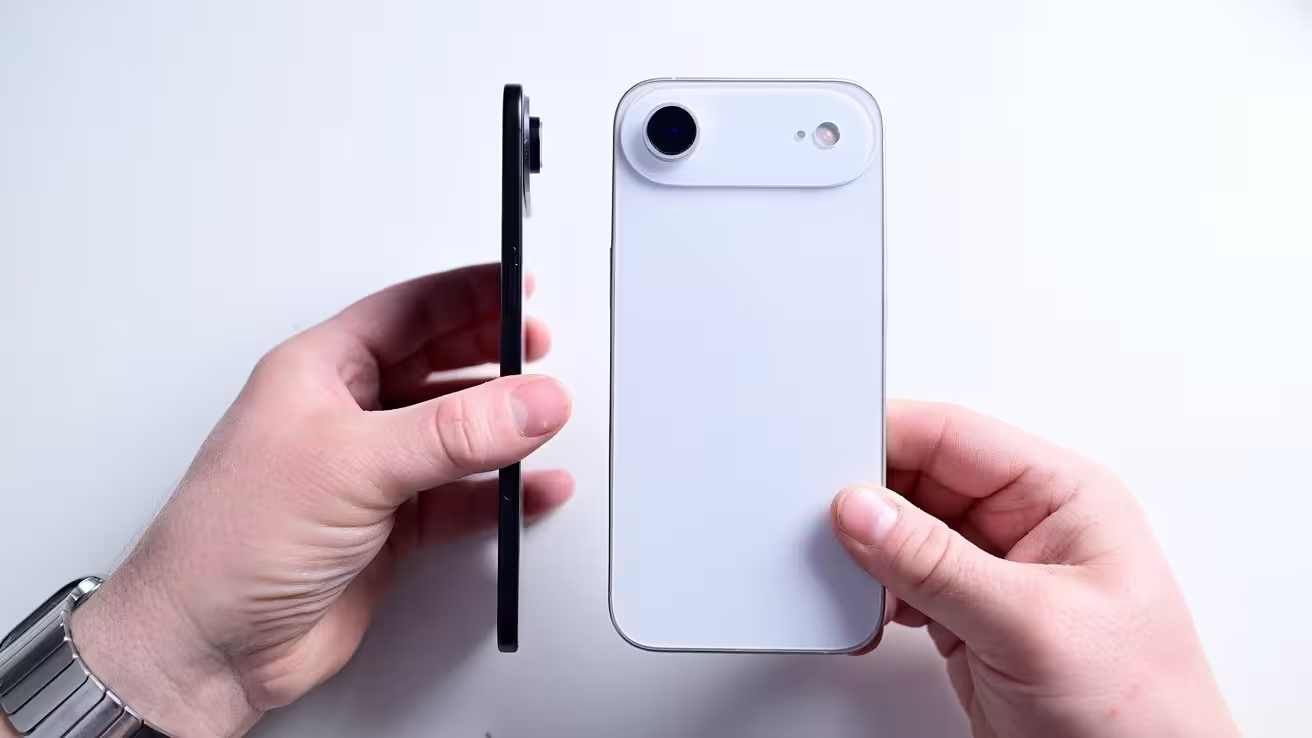5 Minutes
A bold design run for the next three iPhone generations
Apple appears poised for a rare stretch of design-led iPhone releases across 2025–2027. Sources suggest the company will debut an ultra-thin iPhone Air in 2025, follow with a long-rumored iPhone Fold in 2026, and cap the run with a 20th-anniversary edition in 2027. Each year may deliver at least one model that departs noticeably from the status quo, while the broader line remains familiar to mainstream buyers.
What to expect from the iPhone 17 Air
Design and materials
The iPhone 17 Air is said to prioritize minimal thickness and weight, introducing a new camera bar aesthetic as a visual hallmark for future models. Apple appears to be experimenting with form-factor and materials to achieve an exceptionally slim profile, which could make the Air series the most pocketable iPhone yet.
Performance trade-offs and connectivity
That extreme thinness will likely come with trade-offs: reduced battery capacity compared with Pro models and a conservative port configuration. Rumors point to the A19 processor powering this model, paired with Apple’s C1 modem for cellular connectivity. Expect a more modest USB-C implementation and power-management compromises designed around the device's slim chassis.

iPhone Fold: Apple’s entry into foldable hardware (2026)
Form factor and screens
The iPhone Fold is rumored to adopt a two-screen foldable design resembling competing devices such as Samsung’s Galaxy Fold. It would feature an external cover display for one-handed use and a larger internal display when unfolded, effectively blending tablet-like productivity with phone portability.
Authentication and usability
iPhone Fold will need Touch ID for its several use options Because a foldable device demands secure authentication in multiple orientations and modes, Touch ID is expected to make a comeback—likely as an on-power-button sensor or an under-display solution. That return would complement Face ID and improve practical usability when the phone is folded or used flat.
.avif)
iPhone 20: an anniversary rethink (2027)
Design language and materials
Apple’s 20th-anniversary iPhone, rumored for 2027, could be positioned as a high-profile design statement—similar in significance to the iPhone X release. Early whispers point to curved edges that integrate with a Liquid Glass finish introduced in iOS 26, marking a potential shift away from the flat-edged aesthetic that has defined recent generations.
Naming and symbolism
There’s also chatter that Apple may skip a numerical step and treat the device as a milestone model. Whether it arrives as iPhone 20 or under another symbolic name, the unit would likely be a limited flagship intended to showcase future industrial design and material experiments.
Comparisons, advantages and practical use cases
How these models differ from current iPhones
- iPhone 17 Air: thinner, lighter, visually distinct camera bar, aimed at users who prioritize portability and style over maximum battery life and fastest ports.
- iPhone Fold: targets productivity and multitasking users who want a compact device that expands into a larger canvas for reading, content creation, and split-screen apps.
- iPhone 20 (anniversary): design showcase for new materials and curved-edge ergonomics, likely focused on premium buyers and early adopters.
Advantages and real-world scenarios
- Travelers and commuters will appreciate the Air’s lightness.
- Power users and creatives can benefit from the Fold’s larger internal display for editing, multitasking, and media consumption.
- Collectors and technology enthusiasts will be drawn to the anniversary model for its design-first innovations.
Market relevance and software synergy
Apple’s hardware roadmap will be tightly linked to software updates, including the iOS 26 design cues and the company’s broader push into Apple Intelligence. Those software upgrades, combined with new hardware, could create fresh use cases in AI-assisted photography, on-device intelligence, and cross-device workflows—important selling points as Apple aims to sustain growth and innovation narratives.
Final thoughts
While mainstream buyers will likely stick with familiar designs through 2027, having a headline-grabbing model each year could revitalize interest and bolster sales. If these rumors hold, Apple will deliver a three-year stretch that blends experimental form factors with incremental performance and software evolution—setting the stage for its next decade of products and services.
Source: appleinsider


Leave a Comment